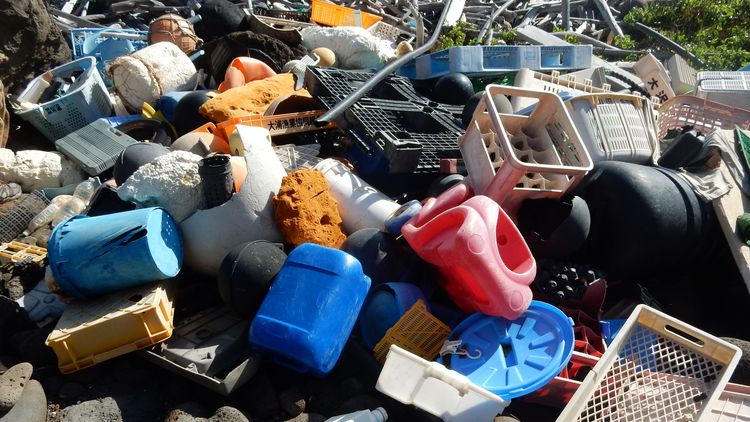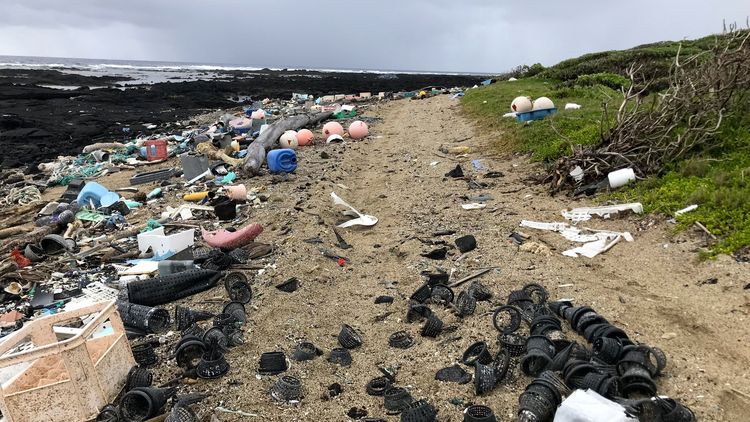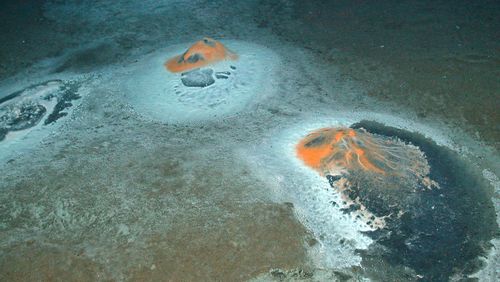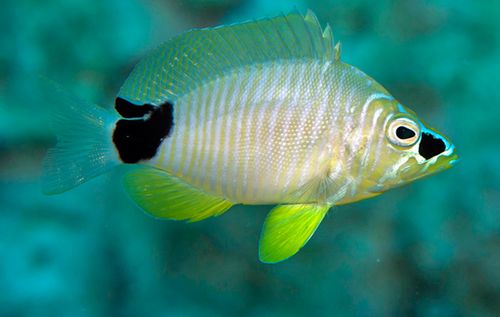More and more plastic litter accumulates in the oceans. Remote sensing specialist Shungudzemwoyo Garaba from the Institute of Chemistry and Biology of the Marine Environment develops monitoring tools to detect, identify and track the long-lived debris.
Dr Garaba, why is marine plastic litter a problem?
Plastics are important for our daily life, but they are also dangerous. The different materials may persist in the environment for a really long time. A plastic bottle takes 450 years to degrade, a styrofoam cup 50 years. Marine litter often ends up in the food web, it can be toxic for marine organisms or disturb their hormone system. The burning of plastics also contributes to ocean acidification, eutrophication and bad water quality. In 2019, the annual cost of plastic pollution to the oceans was estimated to be around 1,5 trillion dollars.
How do plastic items get into the oceans – and what happens to them once they are in the sea?
Some goes out from rivers into the ocean, where animals mistake them for food. Bigger pieces are washed away from beaches or lost from ships. Because of biofouling, some pieces get heavier and sink. So the plastics end up either on the ocean floor, in the stomach of fish, marine mammals or other organisms, or they accumulate in the oceanic gyres.
Why does this happen?
The ocean currents form large circular systems in all ocean basins, so the currents transport plastic items to relatively stationary regions in the center of these gyres. Such areas exist in the middle of the North Pacific, the South Pacific, the North Atlantic or the Mediterranean Sea. Surveys indicate that the highest concentration seems to be in the North Pacific. This area between Hawaii and California is also known as the Great Pacific Garbage Patch. It is three times the size of France.
How much plastic do you find in this region?
Actually, most of the debris is not formig big, swimming islands. It’s not even easy to find big patches of plastics. You mostly find scattered pieces. Many of these are lost fishing nets, so-called ghost nets, which over time collect other objects. Sometimes, big mammals like seals end up being entangled in these nets.
How big ist he problem in our neighbourhood, especially in the North Sea and the Baltic Sea?
I have limited information about monitoring activities in these water bodies. My guess is that we have mainly smaller plastic pieces in the sea, the size of a fingernail or less, but the only way we can really understand how much is out there is to have coordinated cleanup activity in the Baltic Sea and in the North Sea. It is definitely one step to go.
How can monitoring the distribution, the amounts and the sources of the litter with drones, planes or satellites help to solve the problem?
With data from monitoring, you can identify the locations where there are large amounts of debris. I am a scientific collaborator with The Ocean Cleanup, an organisation that has been aiming to collect plastic litter with advanced innovative technologies. Whenever they collect remote sensing data, I look at it and thrive to find better ways to locate the big patches and utilize remote sensing imagery to investigate plastic litter at sea. Once the approaches of remote sensing of marine plastic litter are operational we hope it will significantly reduce the time they spend to go to the right locations for cleanup campaigns.
How do these techniques work?
The detection is based on the optical properties of the plastics. The first step is to look with a normal camera, to use the same light that we can see with the human eye. This helps you to see: Are there plastic items or not? What shape do they have, how big are they? However, you can also sense plastics with near infrared light. This is because infrared light reaching the ocean is almost completely absorbed by the water. Whitecaps or sea foam reflect some infrared radiation, but generally the signal is supposed to be close to zero. Plastics, on the other hand, have a very distinctive signature in the infrared, so we can utilize the reflected signals that we capture with satellite or drones to distinguish litter from ocean water. It is also possible to differentiate the various types of plastics. A similar approach is already being used in recycling centers, but we have to come up with slightly different methods for th e open ocean. We want to find ways that make it easier to find and identify the plastics.
What are you currently working on?
The main goal of my work is to develop improved methods to detect, identify, quantify and track marine litter. I am involved in several projects that develop innovative methods using technology we already have. The European and American space agencies, ESA and NASA, are funding work to understand what the current technologies, for example existing satellites in space, can do to monitor plastics in the water, on beaches or on land. Together with colleagues, I recently published a paper about the potential of using satellite data to study plastics in the open ocean. It is the first of its kind. In that paper, we look at anomalies in the signal that is being reflected from the ocean surface to a satellite. This is a step towards future mapping techniques using the European satellite Sentinel-2 that recently started regular imaging over the Great Pacific Garbage Patch.
You are also chairing a task force on remote sensing of marine litter that was set up last year. What are your goals here?
The idea behind the task force was to coordinate the research activities and have a standardized approach to monitor plastic litter. We are bringing all the experts, the different space agencies and companies together, so that we speak with one voice. In the end, we want to come up with recommendations for the community on how to use different tools in the best way or how to collect data. My role as the scientific coordinator is also to push forward the science, to look how we apply new scientific approaches, and identify knowledge gaps. By making the data accessible to everyone, we hope to motivate people to excange ideas and move forward in the field.
What do you think: Do these activites help to change the attitude towards plastic litter?
I would say yes. Stakeholders like space agencies or politicians are putting more money into studies on plastic litter. In 2016, there wasn’t much funding for remote sensing approaches for the detection of marine litter. Now, there are around 30 projects that I know of. That is one step ahead. Some of the drone images we have collected have been used to make action plans by different member states. There is more and more use of remote sensing results. People use them to make decisions on where to clean and when to clean. There are startup initiatives that are involved in cleaning activites. Some people even build special boats to cleanup the ocean and lakes. There are more and more reports of people doing voluntary activities like cleaning up the beach. I believe we are moving in the right direction.
Interview: Ute Kehse






